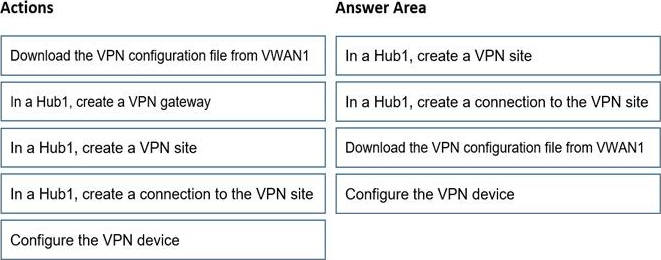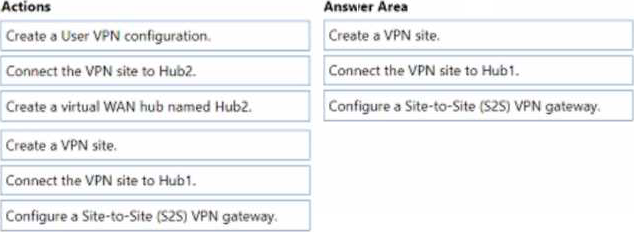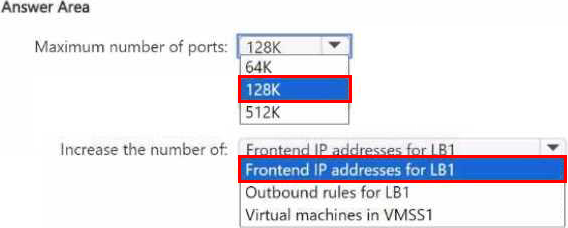Practice Free AZ-700 Exam Online Questions
You have two Azure App Service instances that host the web apps shown the following table.

You deploy an Azure application gateway that has one public frontend IP address and two backend pools.
You need to publish all the web apps to the application gateway. Requests must be routed based on the HTTP host headers.
What is the minimum number of listeners and routing rules you should configure? To answer, select the appropriate options in the answer area. NOTE: Each correct selection is worth one point.

HOTSPOT
You have an Azure subscription that contains the resource groups shown in the following table.

You have the virtual networks shown in the following table.

Vne1l contains two virtual machines named VM1 and VM2. Vnet2 contains two virtual machines named VM3 and VM4. You have the network security groups (NSGs) shown in the following table that include only default rules.
You have the Azure load balancers shown in the following table.
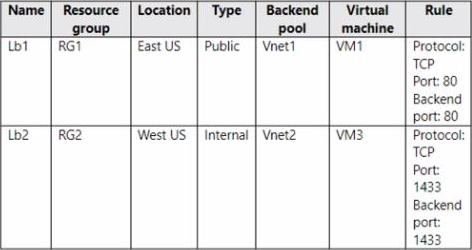
For each of the following statements, select Yes if the statement is true. Otherwise, select No. NOTE: Each correct selection is worth one point.

You have two Azure virtual networks named Vnet1 and Vnet2.
You have a Windows 10 device named Client1 that connects to Vnet1 by using a Point-to-Site (P2S) IKEv2 VPN. You implement virtual network peering between Vnet1 and Vnet2. Vnet1 allows gateway transit Vnet2 can use the. You discover that Client1 cannot communicate with Vnet2. You need to ensure that Client1 can communication with Vnet2.
Solution: You resize the gateway of Vnet1 to a larger SKU.
Does this meet the goal?
- A . Yes
- B . No
You need to provide connectivity to storage1. The solution must meet the PaaS networking requirements and the business requirements.
What should you include in the solution?
- A . a service endpoint
- B . Azure Front Door
- C . a private endpoint
- D . Azure Traffic Manager
DRAG DROP
You have three on-premises sites. Each site has a third-party VPN device.
You have an Azure virtual WAN named VWAN1 that has a hub named Hub1. Hub1 connects two of the three on-premises sites by using a Site-to-Site VPN connection.
You need to connect the third site to the other two sites by using Hub1.
Which four actions should you perform in sequence? To answer, move the appropriate actions from the list of actions to the answer area and arrange them in the correct order.
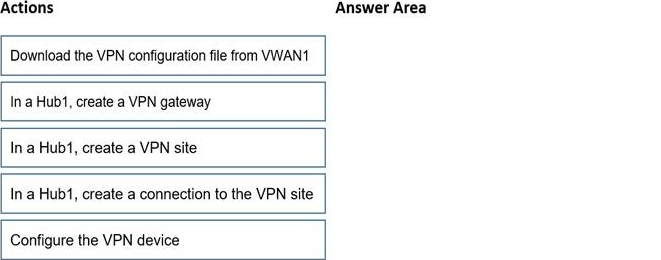
DRAG DROP
You have an on-premises network.
You have an Azure subscription that contains a virtual network named VNet1. VNet1 is connected to an Azure Virtual WAN hub named Hub1.
You need to enable connectivity between the on-premises network and VNet1 by using Hub1.
Which three actions should you perform in sequence? To answer, move the appropriate actions from the list of actions to the answer area and arrange them in the correct order.
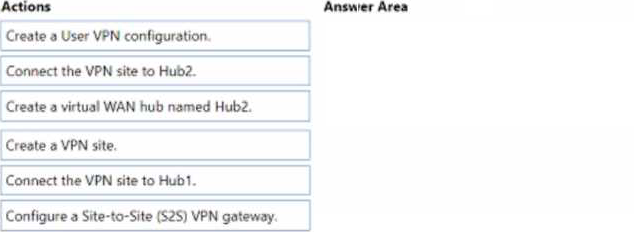
You have an Azure subscription that contains the resources shown in the following table.

You create a virtual network named Vnet2 in the West US region.
You plan to enable peering between Vnet1 and Vnet2.
You need to ensure that the virtual machines connected to Vnet2 can connect to VM1 and VM2 via LB 1.
What should you do?
- A . Change the Floating IP configurations of LB 1.
- B . From the Peerings settings of Vnet2. set Traffic forwarded from remote virtual network to Allow
- C . Change the SKU of LB1
- D . From the Peerings settings of Vnet1, set Traffic forwarded from remote virtual network to Allow.
HOTSPOT
You have an Azure subscription that contains a virtual machine scale set named VMSS1 and a public standard Azure load balancer named LB1. VMSS1 contains eight virtual machines that have private IP addresses only VMSS1 is configured as a backend pool of LB1. LB1 has two frontend IP addresses and one outbound rule that provides internet connectivity to VMSS1.
What is the maximum number of ports available to the virtual machines in VMSS1. and what should you change to increase the maximum number of SNAT ports available to VMSS1? To answer, select the appropriate options in the answer area. NOTE: Each correct selection is worth one point.
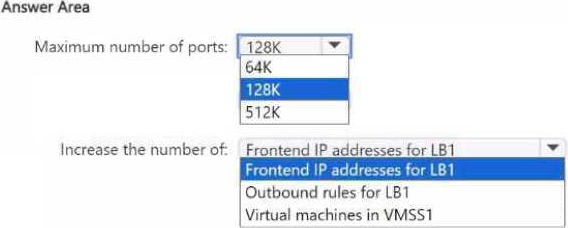
Note: This question is part of a series of questions that present the same scenario. Each question in the series contains a unique solution that might meet the stated goals. Some question sets might have more than one correct solution, while others might not have a correct solution.
After you answer a question in this section, you will NOT be able to return to it. As a result, these questions will not appear in the review screen.
You have an Azure application gateway that has Azure Web Application Firewall (WAF) enabled. You configure the application gateway to direct traffic to the URL of the application gateway.
You attempt to access the URL and receive an HTTP 403 error. You view the diagnostics log and discover the following error.
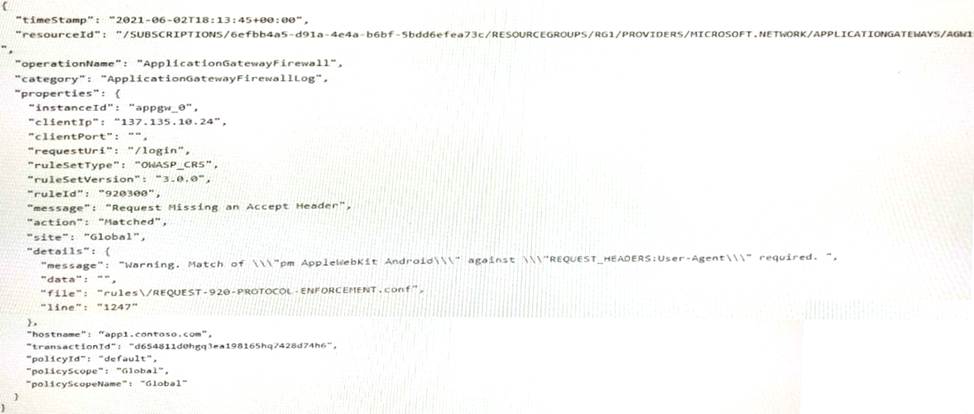
You need to ensure that the URL is accessible through the application gateway.
Solution: You create a WAF policy exclusion request headers that contain 137.135.10.24.
Does this meet the goat?
- A . Yes
- B . No


